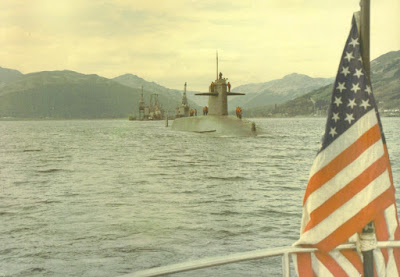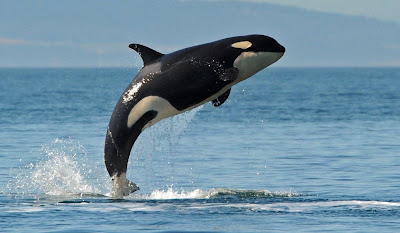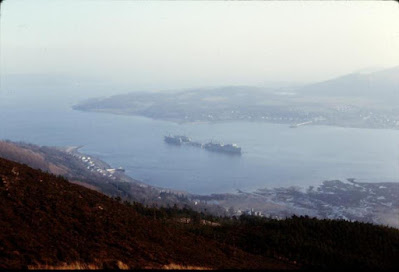As I’ve noted here before, after serving two years on the aircraft carrier USS Kitty Hawk in 1970-1971 during the Vietnam War, I was separated from the Navy.
I went on to study journalism
at Penn State, but I dropped out due to a lack of money. I took a job as a DOD
civilian at the Defense Personnel Support Center in South Philadelphia, but as
I was bored and did not see an immediate future as a writer, I re-upped and
returned to the Navy in 1974.
Serving on the USS Kitty Hawk
two years prior, I had some unique experiences. The aircraft carrier sailed to
Southeast Asia for a WESTPAC combat cruise, serving on “Yankee Station” in the
Gulf of Tonkin off the coast of North Vietnam during the final years of the
Vietnam War.
We worked long and hard hours while on Yankee Station as our aircraft flew combat air sorties, taking the war to the Communist North. Air combat operations were fast-paced and precarious as the carrier launched and recovered aircraft around the clock.
I had an admin job in the
Communications Radio Division, and I served on a Damage Control Team. The teams
were called out to fight fires and quell other emergencies. With vast amounts of jet fuel, bombs,
missiles and rockets on board, an accident or a fire on a carrier can be a
truly deadly affair, which we saw happen on the USS Forrestal and other
carriers during the war.
The long Yankee Station line
periods were broken up by memorable port of calls to Hong Kong, Sasebo, Japan,
and frequent visits to Subic Bay in the Philippines. No one who encountered the
bizarre times in the wide-open city of Olongapo will ever forget it.
I certainly have not.
After re-enlisting, I reported to the Norfolk, Virginia naval base to await my orders. I hoped to receive orders to another aircraft carrier that would cruise the Mediterranean, called the “Med” by American sailors, but I received orders to the USS Saugus (YTB-780), a Navy harbor tugboat attached to Submarine Squadron 14 (SUPRON 14) at the U.S. nuclear submarine base at Holy Loch, Scotland.
I went from serving on one of
the largest warships in the U.S. Navy to one of the smallest boats.
I reported aboard the tugboat
in January of 1974. I regretted immediately my decision to return to the Navy –
what the hell was I thinking? I went from a boring but easy job in a
comfortable government office surrounded by pretty girls to doing hard physical
work aboard a Navy tugboat while enduring the wet and cold Scottish winter.
But looking back after all
these years, I achieved what I had set out to do, which was to have some
interesting travel experiences and a bit of adventure.
During the Cold War years, Submarine Squadron 14, called "Site One," consisted of the USS Canopus, a 644-foot-long ship called a submarine tender, a floating dry dock that could accommodate submarines, and a large barge with a super crane. All were anchored in the middle of the loch.
Submarines reported to Site
One from the sea before and after their patrols and tied up to the anchored
submarine tender. The submarines received supplies, maintenance
and repairs at the floating Navy base. The base also had several small
boats that tied up to the barge.
Two of the boats were 100-foot harbor tugboats, which were the workhorses of the bustling naval base.
The crew consisted of a chief
petty officer and twelve other enlisted sailors.
The USS Saugus and
the USS Natick (YTB 760) towed ships, oil barges,
submarines and other craft in, out, and around the site. The tugboats also
put out fires and broke up oil slicks. Most days during those two years I was a
cold and wet sailor working on the deck of the tugboat at the floating
submarine base.
The work was hard, physical
and dangerous, but we were proud of our small boat and line-handling skills.
Working with the rugged and independent crew on the tugboat felt like I
was serving in McHale's Navy, one of my favorite TV shows
from my youth.
I worked on deck, stood helm
watches while at sea, stood security watches in port, and during my
second year onboard I was the boat's supply petty officer.
The Saugus, along with the USS Natick, were often sent to sea to rendezvous with submarines for medivacs, classified missions and transfers of the Commodore and his staff. We would throw over a short brow to the submarine and the Commodore and his staff walked precariously across the brow from the pitching, rolling and bobbing tugboat to the submarine. Once aboard, the submarine submerged.
Under the sea was calm, but
it was certainly not calm on the surface. The tugboat then served as a target
for the submarine’s torpedoes. In the exercises, the unarmed torpedoes were
aimed to pass near us.
After the torpedo passed us,
we had to go and retrieve them, which was like someone shooting a gun at you
and you then had the further indignity of picking up the shells for the shooter.
Retrieving the torpedoes was not an easy task in winter, as both the tug and the tip of the torpedo bobbed up and down in the rough sea at different intervals. We went to the tug’s fantail and attempted to bring in the torpedo with a thick wire lasso. It often took several attempts before we lassoed the long torpedo.
Once the wire took hold, we
used our hydraulic capstan to twirl the line up and in, bringing the torpedo
out of the sea into the air, where it swung mightily from the rocking of the
boat and the strong winds. We threw another line on the back of the torpedo and
with some difficulty, we brought the torpedo to rest on the fantail.
I recall in the
summer of 1975 we were ordered to sail to Loch Fyne to pick up a floating
torpedo that was spotted by local fishermen. Normally, the fishermen find and
haul in the American torpedo, which had a message on it that read “If found,
call U.S. Navy and claim award.” For some reason, the fishermen did not find
this torpedo.
A squadron officer ordered
our chief to assemble his crew and head out to Loch Fyne and bring in the
torpedo. The chief, whom I nicknamed “Chief Cool,” a stern man who rarely spoke
and had a deadpan face much like the silent film comedian Buster Keaton, was
not happy with being called out on an early Saturday morning, as he was hung
over and thought the mission was a bullshit one.
I had the weekend duty with
another deckhand and an engineman, so I was onboard, but the chief called the
rest of the crew in.
When everyone reported
aboard, the chief told us to get out to Loch Fyne and cruise around, and if we
saw the torpedo, haul it in. But don’t look too hard, he added. With that, the
chief retired to his cabin and went to sleep.
It was a beautiful sunny and
warm day as we entered Loch Fyne. The sea was calm and clear and there was a
soft breeze.
Loch Fyne, which means “Loch
of the Vine” in Scottish Gaelic, is off the Firth of Clyde and located on the
west coast of Argyll, Scotland.
Loch Fyne was teaming with
wildlife on that summer day. As we cruised along slowly, we saw dolphins,
porpoises and various fish in the water. Flocks of seagulls and other birds
formed an air force that flew overhead.
We also saw a huge number of
large dorsal fins protruding from the water. The dorsal fins belonged to
basking sharks, a huge, fierce-looking creature that resembles a great white
shark.
The basking
shark (Cetorhinus maximus) is the world’s second largest shark, but
despite its size and looks, the shark is quite docile and passive and eats
plankton rather than fish and people. The small-brained creatures are called
basking sharks due to their swimming slowly and feeding near the surface, which
makes them appear to be “basking” in the sun.
The average basking shark
weighs more than ten thousand pounds and grows to about twenty-six feet long.
As we cruised among the many
dorsal fins, we were all out on deck snapping photos of the huge sharks. Most
of us would later show the photos and neglect to mention that the sharks were
harmless.
I don’t know who first had
the idea, but someone at the helm in the pilothouse decided to ram one of the
sharks. As we were cruising slowly, and the tug’s bow was swathed in rubber,
the shark was not harmed. Everyone laughed as the shark dashed away from the
tug, and we went on to bump several of the sharks in the loch.
After a bit, most of the crew
left the pilothouse, leaving me and a seaman whose name I don’t recall. The
seaman decided to turn the tug towards another fin in the loch. I felt the bump
as the tug shook from the encounter.
“Oh, shit!” I heard the
seaman say.
I looked towards the seaman
at the helm and beyond him out of the pilothouses’ starboard window. I saw
50-feet of white underbelly as a huge creature breached the sea just off the
tug.
I grabbed the tug’s big wheel
and swung it to port sharply. The boat seemed to lift from the water with the
maneuver just as a huge wave enveloped the pilothouse as the creature crashed
back into the sea.
The seaman stood there in
shock. He managed finally to say, “I didn’t know a shark could jump that high
out of the water.”
“That wasn’t a shark, you
fucking idiot,” I said. “You rammed an orca – a killer whale.”
I knew that
an orca could punch a hole in the hull and sink us, so I was happy to see the
killer whale swim away from us.
By the way, we failed to find
the torpedo.
While serving in Scotland for two years, I had some unique adventures in Holy Loch and out in the Irish Sea. And during my time off, I traveled all over the United Kingdom and visited Italy, Spain and France.
I also spent a day at Loch
Fyne among basking sharks and a killer whale.
Note: You read my other sea stories, vignettes, humor pieces and short stories via the below link:


%20(1).jpg)










No comments:
Post a Comment